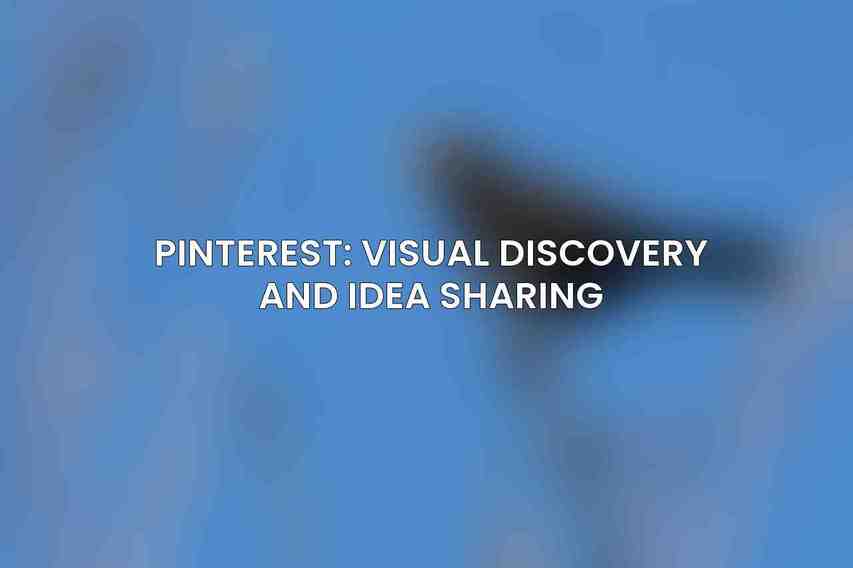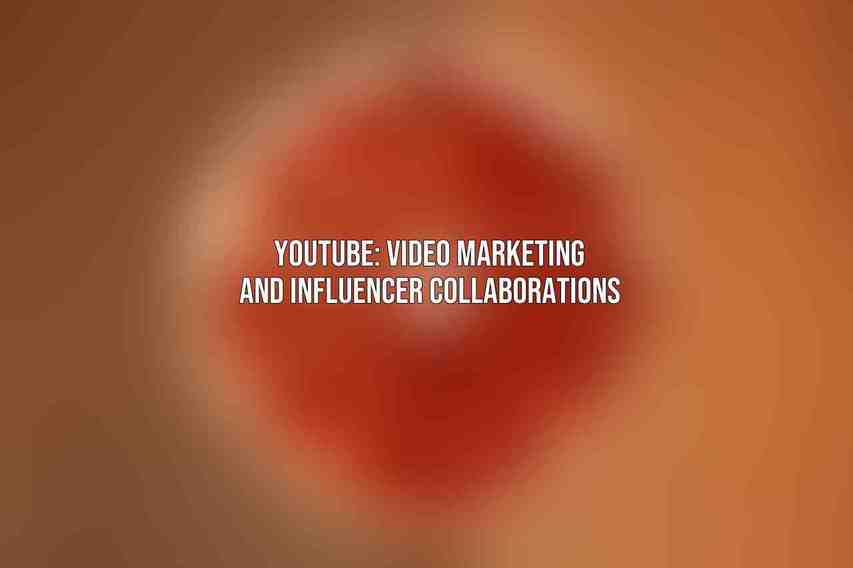understanding the nuances of each platform is crucial for success. Tailoring strategies to match the unique characteristics of various social media platforms can significantly impact engagement, reach, and overall campaign effectiveness. With a plethora of platforms available, marketers must adapt their tactics to align with the distinct features and user behaviors of each platform.
Platform-specific tactics in social media marketing are essential for optimizing content and achieving the desired outcomes. By tailoring strategies to fit the ecosystem of each platform, businesses can effectively engage with their target audience, drive brand awareness, and ultimately increase conversion rates. Embracing the diversity of social media platforms allows brands to connect with users in a meaningful and authentic way, fostering stronger relationships and brand loyalty.
Instagram: Visual Storytelling and Community Building
Instagram’s visual-centric nature makes it an ideal platform for showcasing high-quality images and videos that resonate with the audience. Leveraging visually appealing content can captivate users’ attention and drive engagement. Incorporating relevant hashtags and geotags can enhance discoverability and reach a broader audience. Engaging captions play a vital role in conveying brand messaging and encouraging interactions. Furthermore, building a community through features like Stories and direct messages (DMs) fosters a sense of belonging and encourages user engagement.
Facebook: Content Distribution and Targeting
Facebook’s extensive user base and diverse features make it a powerhouse for content distribution and targeting. Optimizing content for news feeds by including compelling visuals and relevant captions can boost engagement. Utilizing Facebook Groups facilitates community engagement and discussion around specific topics or interests. Leveraging Facebook Ads enables targeted reach based on demographics, interests, and behaviors. Measuring the effectiveness of campaigns is simplified with the robust analytics provided by Facebook Insights.
Twitter: Real-Time Updates and Thought Leadership
Twitter’s fast-paced environment necessitates concise and impactful tweets to grab users’ attention. Incorporating relevant hashtags and tapping into trending topics can amplify visibility and engagement. Establishing credibility through thought leadership by sharing valuable insights and opinions positions brands as industry experts. Engaging with followers through interactive features like polls and Q&A sessions encourages dialogue and strengthens relationships with the audience.
LinkedIn: Professional Networking and Content Marketing
LinkedIn serves as a platform for professional networking and content marketing. Building a strong professional profile and network is essential for establishing credibility and expanding industry connections. Publishing insightful articles and updates showcases expertise and thought leadership within a professional setting. Participating in LinkedIn Groups provides a valuable opportunity for industry-specific discussions and networking. Running LinkedIn Ads allows for targeted outreach to professionals based on job roles, industries, or company size.
Pinterest: Visual Discovery and Idea Sharing

Pinterest’s emphasis on visual content makes it a hub for visual discovery and idea sharing. Creating visually appealing pins that resonate with the audience’s interests can drive engagement and website traffic. Optimizing pins with relevant keywords enhances discoverability and ensures content is surfaced to the right audience. Organizing pins into boards allows for easy categorization and provides a curated experience for users. Fostering a community through group boards encourages collaboration and idea sharing among like-minded individuals.
TikTok: Short-Form Video and Entertainment
TikTok’s popularity stems from its short-form video format, making it a platform for creativity and entertainment. Creating captivating short videos that resonate with TikTok’s audience can lead to viral success. Leveraging trending sounds and effects keeps content fresh and engaging. Collaborating with influencers on TikTok can broaden reach and tap into established communities. Running TikTok Ads can further amplify brand awareness and engagement among the platform’s youthful demographic.
Snapchat: Ephemeral Content and Augmented Reality
Snapchat’s unique features like Lenses and Filters provide interactive and engaging experiences for users. Creating compelling Stories that offer a behind-the-scenes look or exclusive content can drive engagement and create a sense of FOMO (fear of missing out). Running Snapchat Ads allows for targeted reach and exposure to the platform’s active user base. Monitoring campaign performance is made easier with Snapchat Insights, providing valuable data on views, engagement, and demographics.
YouTube: Video Marketing and Influencer Collaborations

YouTube’s dominance in video content makes it a key platform for video marketing and influencer collaborations. Creating high-quality videos that resonate with the audience’s interests can drive engagement and subscriptions. Optimizing videos for discoverability through SEO practices increases the likelihood of content being found organically. Collaborating with influencers on branded content can expand reach and credibility. Running YouTube Ads can further enhance brand visibility and reach a wider audience through targeted placements.
tailoring tactics for each social media platform is imperative for maximizing the impact of marketing campaigns and effectively engaging with the target audience. By understanding the unique characteristics and user behaviors of each platform, brands can create tailored strategies that resonate with users and drive desired outcomes. Continuous optimization and monitoring of campaigns are essential for adapting to evolving trends and ensuring success in platform-specific marketing. Embracing best practices and staying abreast of platform updates will position brands for success in the dynamic world of social media marketing.
Frequently Asked Questions
What are the benefits of tailoring tactics for each social media platform?
Tailoring tactics for each social media platform allows for better engagement with the specific audience on that platform, increasing the likelihood of success in reaching your goals.
How can I determine which tactics to use for each social media platform?
Research each platform’s unique audience demographics, best practices, and content formats to tailor your tactics effectively.
What are some common mistakes to avoid when tailoring tactics for social media platforms?
Common mistakes include using the same content across all platforms, ignoring platform-specific features, and not analyzing performance data to refine tactics. Read more on Top Social Media Tools Reviewed for 2024
Should I focus on one social media platform or use multiple platforms for my marketing strategy?
It depends on your target audience and marketing goals. Using multiple platforms can help reach a broader audience, but focusing on one platform can allow for more in-depth engagement.
How often should I review and update my tailored tactics for social media platforms?
Regularly monitor performance metrics, audience feedback, and industry trends to determine when adjustments to your tactics are needed. Aim to review and update your tactics at least quarterly for optimal results. Dive deeper into Essential Social Media Strategy for Engagement

